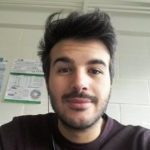Link to Pubmed [PMID] – 36442505
Link to DOI – gkac107910.1093/nar/gkac1079
Nucleic Acids Res 2022 Nov; ():
Plasmids can be transferred between cells by conjugation, thereby driving bacterial evolution by horizontal gene transfer. Yet, we ignore the molecular mechanisms of transfer for many plasmids because they lack all protein-coding genes required for conjugation. We solved this conundrum by identifying hundreds of plasmids and chromosomes with conjugative origins of transfer in Escherichia coli and Staphylococcus aureus. These plasmids (pOriT) hijack the relaxases of conjugative or mobilizable elements, but not both. The functional dependencies between pOriT and other plasmids explain their co-occurrence: pOriT are abundant in cells with many plasmids, whereas conjugative plasmids are the most common in the others. We systematically characterized plasmid mobility in relation to conjugation and alternative mechanisms of transfer and can now propose a putative mechanism of transfer for ∼90% of them. In most cases, plasmid mobility seems to involve conjugation. Interestingly, the mechanisms of mobility are important determinants of plasmid-encoded accessory traits, since pOriTs have the highest densities of antimicrobial resistance genes, whereas plasmids lacking putative mechanisms of transfer have the lowest. We illuminate the evolutionary relationships between plasmids and suggest that many pOriT may have arisen by gene deletions in other types of plasmids. These results suggest that most plasmids can be transferred by conjugation.Some plasmids encode complex cellular structures to transfer between bacteria by conjugation, which facilitates the spread of adaptive trains between cells. Yet, half of all plasmids lack the protein-coding genes required for conjugation. Their mobility has remained a mystery that we now contribute to solve by proposing a mechanism of transfer for 9 out of 10 plasmids. We identified the only non-coding sequence required for conjugation, the origin of transfer (oriT), in hundreds of plasmids of Escherichia coli and Staphylococcus aureus. These plasmids might have originated from larger ones and have the highest density of antibiotic resistance genes. Their horizontal transfer depends on complex functional dependencies with other plasmids, which explains their co-existence in bacterial cells.




